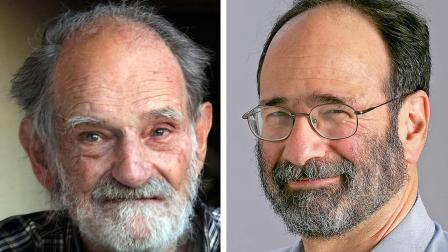Matchmaking: The Nobel Prize to revolutionize Grid and Cloud Computing ?
 |
| Lloyd Shapley and Alvin E. Roth Nobel Prize Economics 2012 |
I read fascinated the article from Boston.com The Matchmaaker about Alvin E. Roth. Here is a quote:
Academically speaking, Roth is a pioneer of so-called market design: finding situations where a market is failing — often, a place that most people wouldn’t even recognize as a market — and making it work better. Roth has influenced a cadre of young, energetic market designers, many of whom have taken up prominent positions at top universities. Inspired by Roth’s work, these rising economists are also setting their sights on real-world problems. Some are looking at dating websites; others are interested in how universities could do better at scheduling their students’ classes.The first thought it flashed my mind: Why not use Shapley and Roth algorithms to match computing, storage and data resources to users?
When most people think of economics, they think of money — the study of how much things cost and why. Roth distinguishes himself by being more interested in situations where money plays little or no role — for instance, the process that determines who among the thousands of patients awaiting kidney transplants nationwide should receive the small number of organs that are available. As a society, we’ve decided we’re not comfortable with people selling their organs, so some other system — some other kind of market — is required. And a market, in Roth’s view, does not necessarily come down to prices, nor is it always ruled by simple principles like supply and demand: As long as people are competing with each other to get what they want, then resources are being allocated, and that means economists should be thinking about itBingo, I jumped. Lets see the Open Science Grid in Wikipedia
The Open Science Grid Consortium is an organization that administers a worldwide grid of technological resources called the Open Science Grid, The consortium is composed of service and resource providers, researchers from universities and national laboratories, as well as computing centers across the United States. Members independently own and manage the resources which make up the distributed facility, and consortium agreements provide the framework for technological and organizational integration.
In total, the OSG comprises over 25,000 computers with over 43,000 processors, most of which are running a distribution of Linux. 72 institutions, including 42 universities, are consortium members who contribute resources to the grid. There are 90 distinct computational and storage nodes in the grid, which are distributed across the United States and Brazil. The grid is peered with other grids, including TeraGrid, LHC Computing Grid and EGEE, allowing data and resources from those grids to be shared.This is a market prone to be improved by market sharing. It includes Grid Computing and it includes Cloud Computing.
Roth and his disciples have made happy many people and organizations using the algorithms originally published by Shapley and Gale (Shapley partner who died in 1998) .
Now its time the management of distributed computing resources. Most of the decision in science and enterprise grids are not based on money and stock exchanges. This does not mean they are not part of a market.


Comments